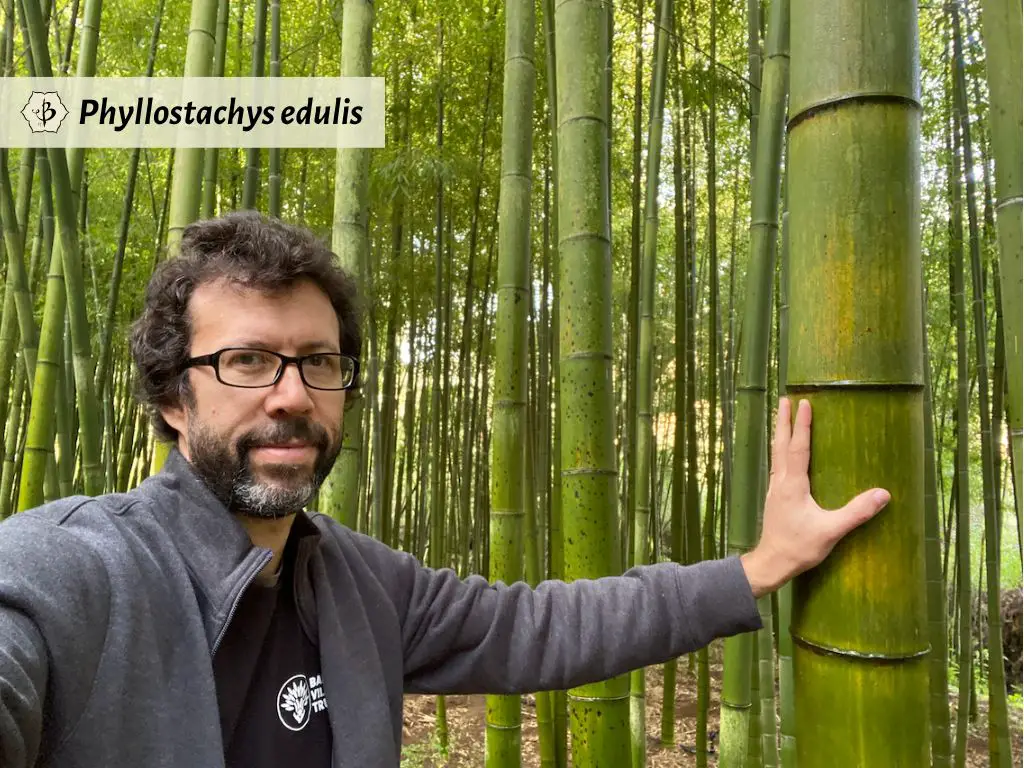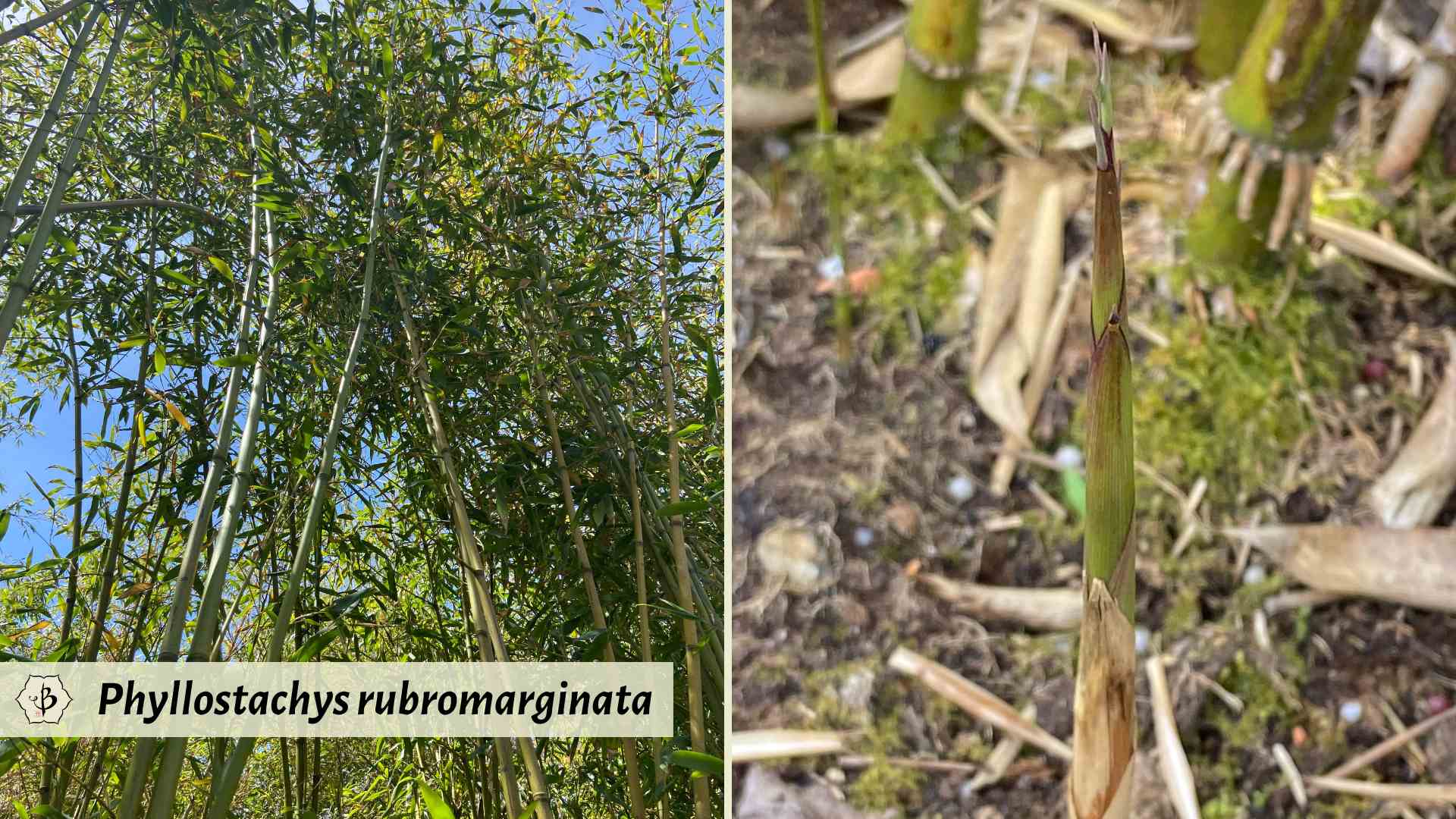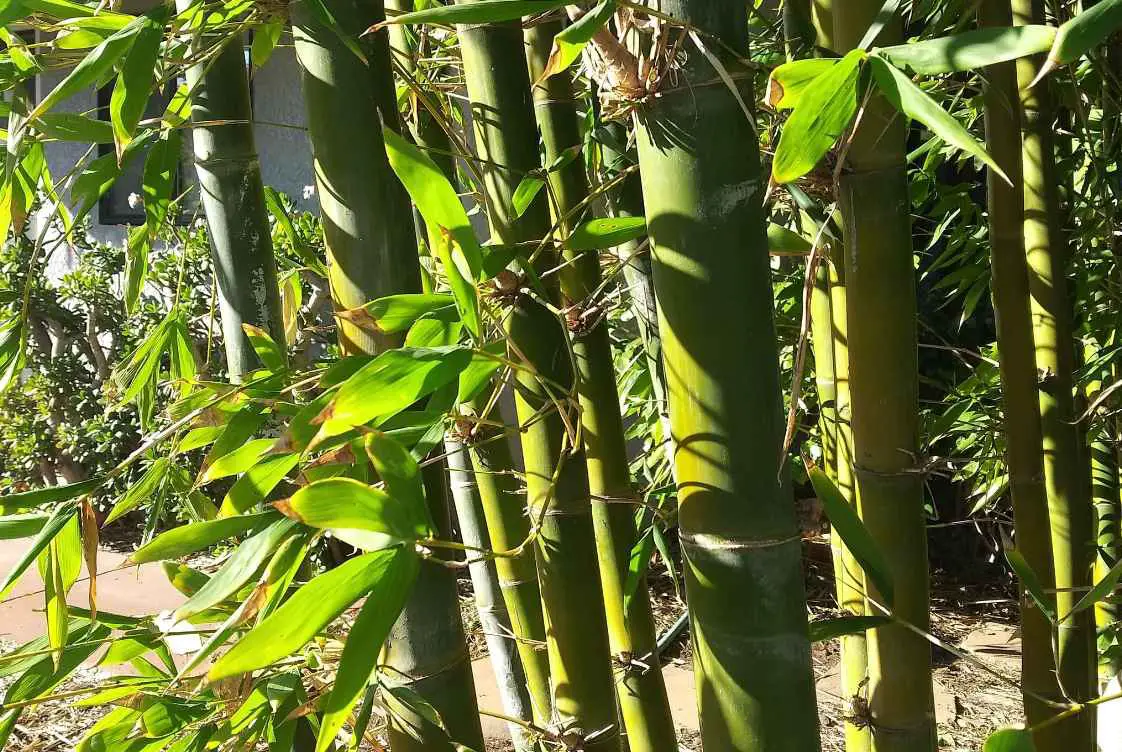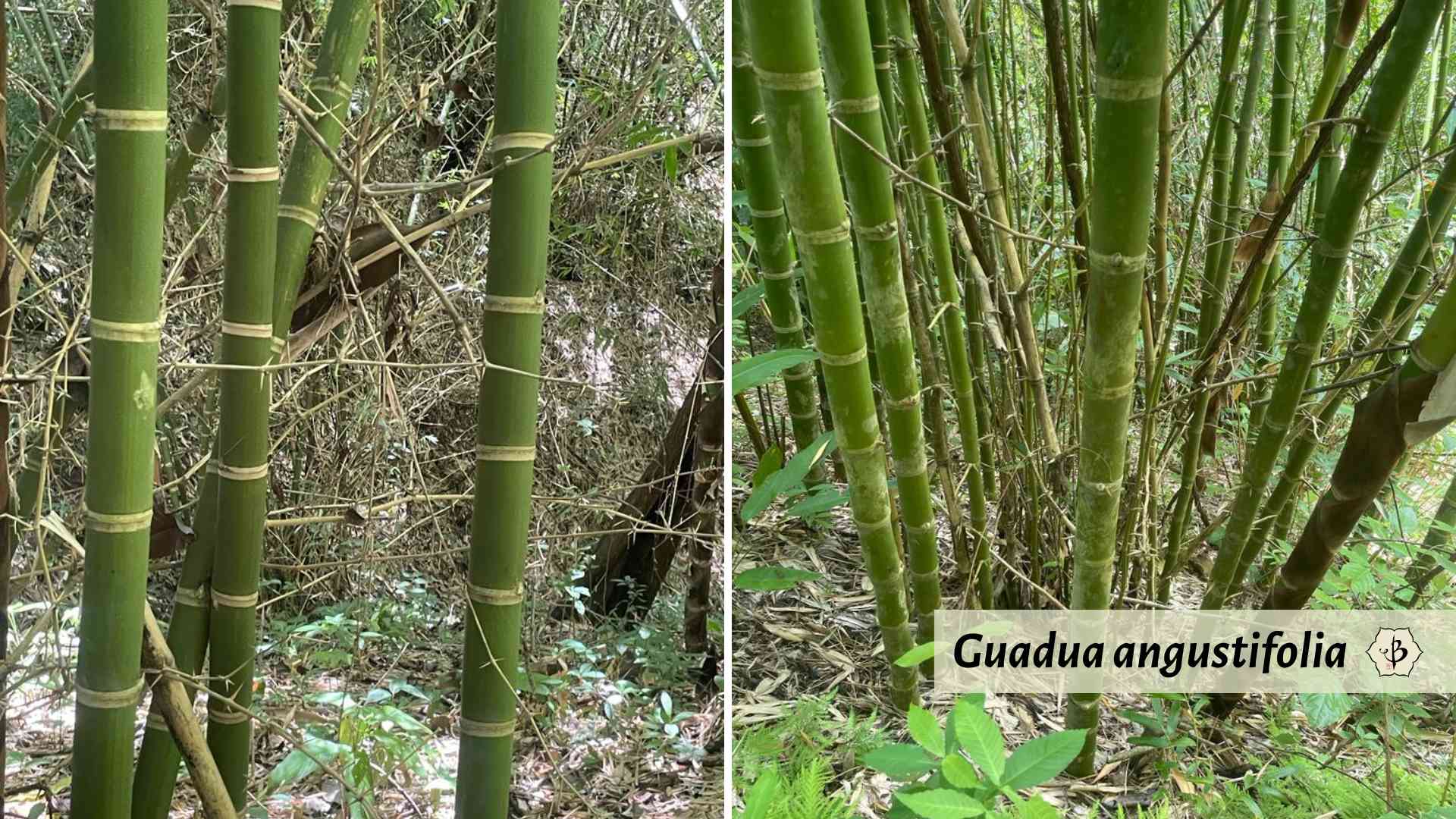Americans and Europeans have long looked eastward for their superior supply of bamboo. Indeed, Asia and the Far East are where the vast majority of bamboo originates. But as our focus on sustainability intensifies, along with a drive for resource independence, many Westerners now wish to produce their own bamboo. The fact that we can reduce our bamboo’s carbon footprint by growing it domestically is pretty obvious. But with thousands of varieties to choose from, the question of which bamboo species to plant on the farm is not so easy to answer.
There are hundreds of bamboo species to choose from, but for commercial farming, only a handful of bamboo varieties are practical. In most temperate climates, where you have a high likelihood of freezing, members of the running genus Phyllostachys are the best option. The largest and most useful timber varieties include Phyllostachys bambusoides (Madake), Phyllostachys nigra ‘Henon’, and Phyllostachys edulis (Moso). P. rubromarginata is a smaller but robust species, ideal for generating biomass. In warmer regions, with less frost, clumping species of Bambusa could be an option. B. oldhamii and B. balcooa produce especially strong poles. In tropical climates, Dendrocalamus asper is the most popular choice.
NOTE: This article first appeared in May 2021, most recently updated in February 2024.
Farming domestic bamboo
The interest in farming bamboo in America has never been greater. And for good reason. Many consider bamboo to be the fastest-growing and most readily renewable resource on earth. Americans already use it for flooring, cabinetry, construction and textiles. We’re even exploring its potential for tree-free toilet paper and a non-food source of ethanol biofuel.
Without a doubt, a tally of bamboo’s multifarious uses could stretch out nearly as long as a comprehensive list of Chinese Emperors. And its benefits are equally impressive. But importing bamboo from the other side of the world does a lot to cancel out its superior sustainability.

Best species for farming bamboo
Farming bamboo in Asia is fairly straightforward. Each region has its own indigenous species, and the locals are well aware of their respective characteristics. In their own natural habitats, the native species are sure to thrive.
But in the United States, there are just three native varieties of bamboo, all members of the genus Arundinaria. Sometimes called hill cane or river cane, these bamboo species have their own redeeming qualities, but none is ideal for cultivating as a cash crop.
To maximize their yields and profits, farmers want to plant bamboo species that are the tallest, thickest and fastest-growing. Besides the diameter of the stalks, the thickness of the culm wall is also very important. Thicker walls make for a stronger building material, as well as greater overall biomass.
If the poles will be used for construction or processed into engineered lumber, then the culm wall thickness is crucial. If you’re growing bamboo for fuel or paper pulp, then the quality and thickness of the culms are less important. For those applications, it’s simply a matter of producing the greatest quantity of biomass.
Whenever planting bamboo, it’s also important to understand the difference between runners and clumpers. Runners, like Phyllostachys, have a far more aggressive growth habit, making them potentially invasive. But they are generally much more cold-tolerant. Clumpers, like Bambusa, usually come from tropical or sub-tropical climates and prefer warmer weather. Their clumping roots are far more contained.
Phyllostachys bambusoides
Commonly known as Japanese Timber Bamboo or ‘Madake’, this is a majestic species of bamboo for both ornamental gardening and commercial cultivation. Smooth, dark green culms can grow 50 to 70 feet tall with a culm diameter of about 5 inches. Its great size and thick culm walls make this an ideal species for building and construction, but it is slower growing than some of the other Phyllostachys varieties. This species does best in zones 7 or 8, but it’s cold-hardy down to 0º F.

Phyllostachys edulis, or Moso
Commercially speaking, Moso bamboo is the most important species of bamboo on the planet. This giant timber bamboo is cultivated in its native China for everything from flooring to cutting boards to fabric to edible shoots. In China, this bamboo easily grows 100 feet tall, with 4 to 5-inch culms. But in the US, farmers have a much harder time getting the plants established. A couple of plantations in the Deep South have had success with it, but it’s not proven to be a good choice west of the Mississippi.
Phyllostachys nigra ‘Henon’
Giant Gray, as it’s known, is a close relative, a subspecies actually, of the exceedingly popular Black Bamboo or Phyllostachys nigra. Unlike the typical species, Henon grows lighter in color, more of a greenish-gray than a brownish-black. Moreover, it grows far taller and thicker, ordinarily 50 to 60 feet tall and about 4 inches thick. It is faster growing than P. bambusoides and much easier to establish than Moso, making it one of the most popular species for bamboo farmers. And although bamboo cultivation is somewhat easier in the Southeastern states, Henon also does very well in the Pacific Northwest. It can handle temperatures of 5 or 10º below zero F.

Phyllostachys rubromarginata
Most farmers want to plant timber bamboo to get the highest (and tallest) yield from their acreage. But Red Margin Bamboo, or Rubro, as it’s sometimes called, is the smallest species on this list. Still, its upright culms usually grow about 30 to 40 feet tall and around 3 inches in diameter. It’s not a great bamboo for construction, but in terms of generating biomass, its vigorous growth rate makes it a force to reckon with. Rubro is especially resilient, nearly indestructible, in all kinds of growing conditions, including sub-zero temperatures. Don’t plant this species unless you’re ready to make a commitment, because it has a way of taking over quickly.
Phyllostachys vivax
Chinese Timber Bamboo or Vivax is among the tallest and probably the thickest of all the Phyllostachys. Mature plants typically grow more than 50 feet tall with a girth sometimes exceeding 5 inches. As such, they make beautiful specimen plants and excellent privacy screens. However, their relatively thin culm walls make them more susceptible to cracking and poorly suited for construction purposes.

Bambusa balcooa
Bambusa is a clumping genus of tropical bamboo, and therefore they are less cold-tolerant and less likely to spread out of control. Tropical bamboo also tends to have thicker culm walls than temperate bamboos. This makes them superior for building and very resistant to cracking.
B. balcooa, or Female Bamboo, can grow 60 to 80 feet tall and 5 to 6 inches thick in the right conditions. It’s native to India and Bangladesh and thrives in a warm, subtropical habitat. Unusually thick culm walls make for an excellent building material, but this species also used for papermaking and other applications. It’s widely cultivated in other parts of the world including subtropical Africa. However, it does produce a preponderance of lateral branches which can make it difficult to manage.
Also check out Bambusa beecheyana, if your main interest is producing edible bamboo shoots.
Bambusa oldhamii
Oldham’s, or Chinese Timber Bamboo, is one of the most popular ornamental species in the United States. Culms typically grow 50 to 60 feet tall and about 4 inches thick. Unlike some other Bambusa varieties, B. oldhamii is relatively cold-tolerant, able to withstand temperatures down to around 20º F. This is a good choice for a small-scale bamboo farm or for nursery stock. Unlike some species of thorny bamboo, Oldham’s looks very attractive in the garden.

Dendrocalamus asper
This tropical giant is native to Southeast Asia and Indonesia, where it’s used for nearly everything. In recent years, farmers in tropical regions around the world have begun cultivating this species, including Kenya, Ecuador and Florida. In the right climate, it grows quickly and produces culms of the highest quality, often reaching 50 to 60 feet in height. The fresh shoots are also edible, making them a potentially valuable commodity.
Guadua angustifolia
Guadua, endemic to the tropical highlands of Latin America, is the king of bamboo in the western hemisphere. There’s a long tradition of cultivating and utilizing this majestic species of bamboo, especially in Colombia, but also in Ecuador, Brazil and Central America. Elsewhere, however, it has not proven to be such a successful species.
It grows in loose, open clumps, making it easier to manage than some tight-clumping varieties of Bambusa or Dendrocalmus. But the thorny branches can make it difficult to work with. But the towering poles, up to 100 feet tall, produce some excellent quality building material, and many consider it the world’s best bamboo species. But we’re still waiting to see a healthy grove of Guadua take off in Africa or Southeast Asia, where Asper continues to be the preferred variety of choice.

Other considerations when farming bamboo
When selecting which species to plant on a bamboo farm, there are several factors to consider. Chief among them are your climate and growing conditions. Many varieties simply won’t survive a deep freeze, or else their growth rate will be severely impeded, putting a prohibitive dent in your profits. Other species, like Moso (P. edulis), are very difficult to grow on the West Coast. There you are better off planting Henon or Madake.

It’s also essential to know what you plan to do with the bamboo. If you’re producing nursery stock, you will have a different strategy than if you’re trying to get the best quality poles for building and construction. On the other hand, if you’re just generating biomass to sell to a paper mill or an ethanol plant, the quality of poles will be insignificant. You just want a high yield. In that case, P. rubromarginata might be your best choice.
If you don’t have a paper mill or ethanol plant to purchase your cash crop, you may want to have another plan. Many bamboo farmers make good money selling the fresh, young shoots of their bamboo as a food product. You can sell them at farmer’s markets or in bulk to grocery stores and Asian restaurants. All of the species in this article have edible shoots that are good for eating. Just be sure to boil them first (or ferment them) to remove any toxins.
Further reading
If you’re fascinated by bamboo’s potential as a cash crop and an ornamental grass, you may want to check out more of our in-depth articles on bamboo cultivation.


























Can I grow bamboo in Stigler. Ok 74462
Yes, probably some variety of Phyllostachys will be best. Check out these Cold-Hardy Bamboo species.
Where can I sell my standing bamboo ? I have over a truck load. It ranges from 1 in to 4 in and is 70 to 80 ft tall .
Your best best will be to find a local market for it, perhaps for light construction or furniture making, or for decorative use in a hotel or restaurant.